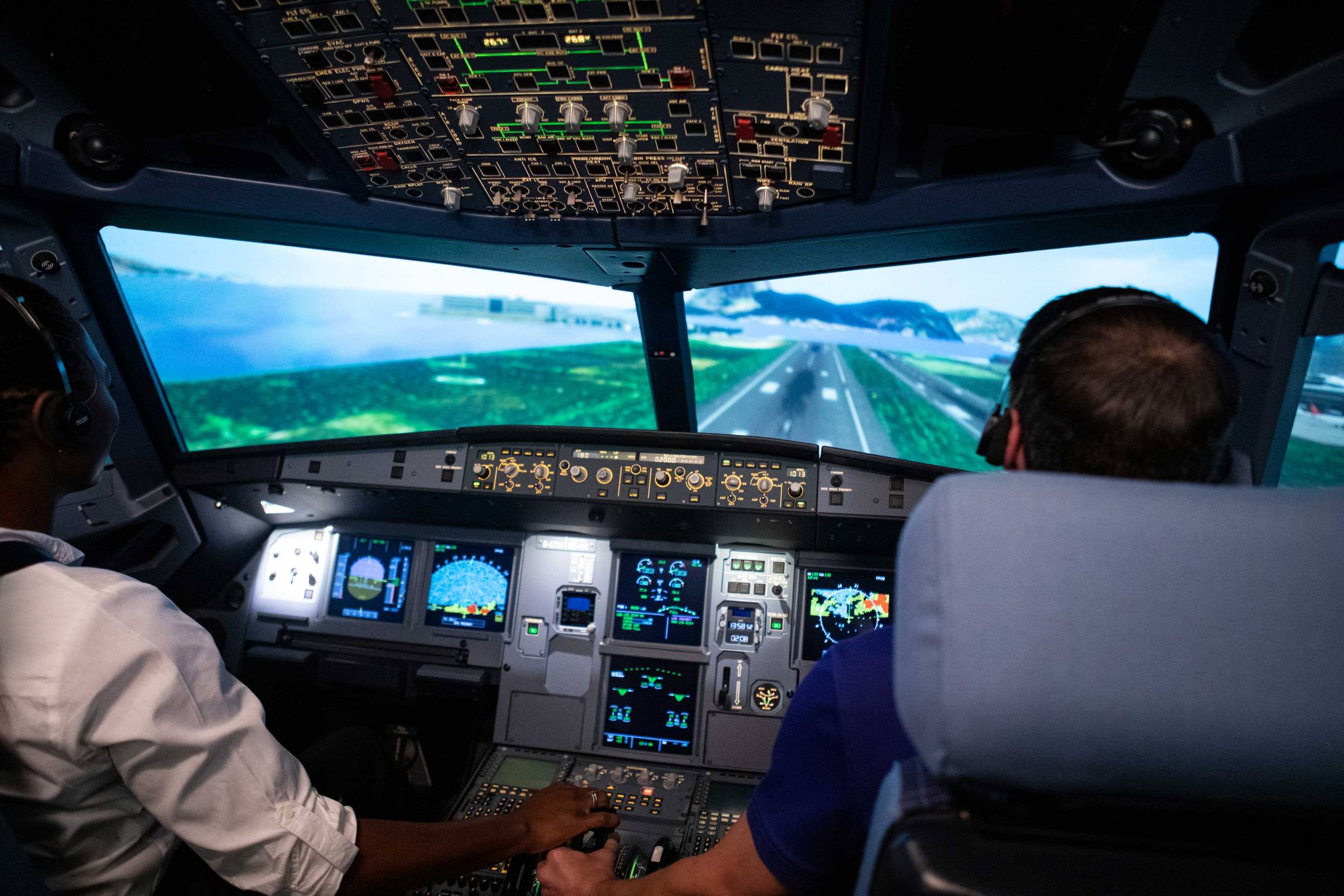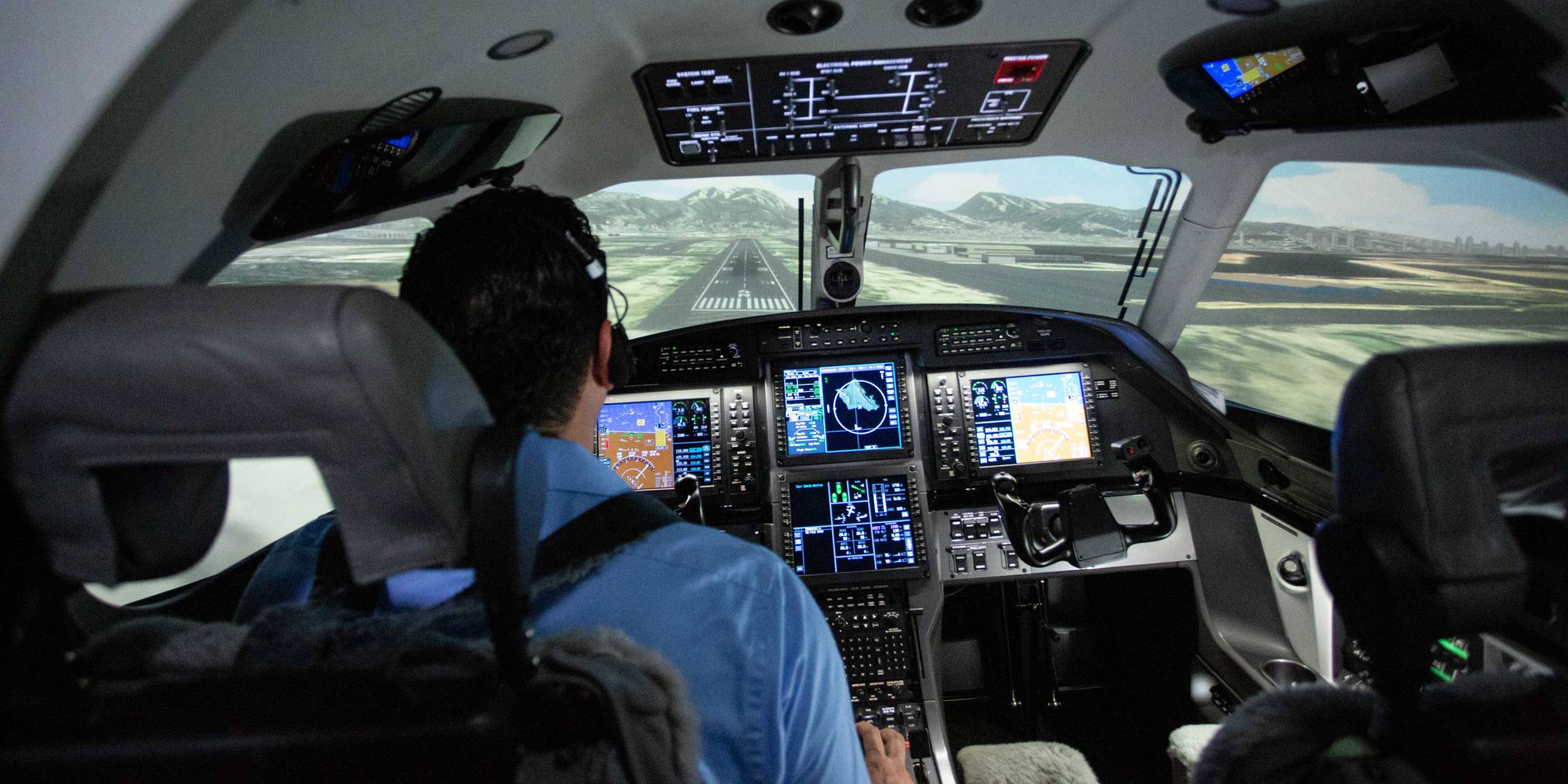Click Here to View This Page on Production Frontend
Click Here to Export Node Content
Click Here to View Printer-Friendly Version (Raw Backend)
Note: front-end display has links to styled print versions.
Content Node ID: 414116
Landing an aircraft correctly on a designated and clearly marked landing strip is something all pilots have to do – on every flight. But this straightforward task can be challenging – with weather playing a factor, even in warmer months when pilots may become complacent to changing conditions.
Runway excursions are the cause of more than a third of all aviation accidents, with many resulting in substantial damage or destruction of the aircraft. A study commissioned by FlightSafety found more than 125 runway excursions occurred in 2022.
Runway excursions also increase the risk of injury or fatalities to passengers and flight crew. FlightSafety ensures its training keeps pilots prepared by placing a special focus on this potentially deadly risk. 
An Uptick in Danger
Runway excursions – defined as any time an aircraft unintentionally leaves the designated runway surfaces – have drawn the attention of aviation safety experts and pilots at every level.
The seriousness of the problem is ever present. On average, two runway excursions occur each week worldwide and the National Transportation Safety Board reports that runway excursions have been increasing.
Poor weather can be a contributing factor however, more runway excursions occur in summer months when visual approaches are more common. Pilots may become more complacent during visual approach and landings in good weather, disregarding approach aids and adherence to the optimal flight path to the runway may not take the degradation of conditions as seriously in warm, clear weather as they might during cold winter months. For example, a crew may be more likely to underestimate the effects of a passing rain shower and wet runway on braking effectivity in summer months than they would during cold rainy winter months.
Additionally, there is a natural human tendency known as frequency gambling where a person will begin to ignore the “correct” way to respond to a situation if there were no consequences to the same response in previous experiences. For example, drivers who speed and do not get a ticket or run yellow lights without a collision may condition themselves to ignore the safety rules as they have not experienced any negative consequences in the past.
In aviation this may translate to a crew that consistently flies the approach too fast or too high but successfully lands and stops due to long and dry runways conditioning themselves to believe that flying fast and high will work every time, even when the runway is short or wet, making a runway excursion more likely.
FlightSafety is working to combat that complacency in simulator training events.
Data Fuels Training
Data is at the heart of the FlightSafety approach to training pilots to recognize the warning signs and mitigate risks of potential runway excursions. Training incorporates runway excursion studies and other risk factor data emphasizing stable approach procedures and techniques for precisely delivering the aircraft to the runway touchdown zone.
FlightSafety also reinforces proper go-around decision-making and procedures in training to ensure crews are able to respond promptly and safely to unstable or changing conditions. Instructors are to control the weather and stability conditions in the simulator providing realistic and challenging approach and landing scenarios. After each approach, FlightSafety instructors are able to see the flight path data, and pilot performance identifying and correcting issues before a pilot may encounter a similar situation in real-world flying.
What has worked before for the pilot in terms of aircraft flight path can be tested against other training and real-world data, showing that the crew is operating within appropriate margins of safety and reinforcing the idea that pilots need to conduct a go-around, rather than continuing to a potentially unsafe landing when the margins of safety aren’t sufficient. FlightSafety is working to change the mindset from a go-around being a negative event to a go-around may be the best and safest course of action. 
Recognizing Warning Signs
The first step in avoiding a runway excursion is recognizing the flight may be at risk. Flight Operations Quality Assurance (FOQA) data helps teach pilots to recognize warning signs of potential runway excursions so they can take corrective action.
Thirty-five percent of excursions resulted in substantial damage or destruction of the aircraft; going off the side of the runway was more prevalent than off the end; and the highest risk runways were those with landing distance available between 5,000 and 6,000 ft. Unstable approach, weather/wind and mechanical issues were the biggest contributing factors. Twenty-five percent of runway excursions involved mechanical issues or failures, such as a blown tire, locked brakes, asymmetric reverse thrust, or hydraulic system failures. Quartering tailwinds, crosswinds, and gusting or variable direction winds are shown to be key factors in just under a quarter of runway excursions.
FlightSafety’s curriculum puts an emphasis on executing a stable approach, as well as increasing situational awareness throughout the approach and landing to immediately identify any flight path deviations or environmental changes that require action to prevent an excursion.
A focus on approach and landing to runways between 5,000 and 6,000 ft. is maintained throughout training and go-arounds are emphasized if flight path deviations cannot be corrected immediately.
Based on historical trends, FlightSafety expects to continue focused training on runway excursions for the foreseeable future, as the rate of runway excursions does not appear to be subsiding.
No pilot, no matter how experienced, is immune to having a runway excursion. Recognizing, understanding runway excursion risks and properly executing mitigation strategies in training can prepare pilots for real-world operations.
FlightSafety is dedicated to giving pilots all the tools and practical solutions to reduce the risks of runway excursions.